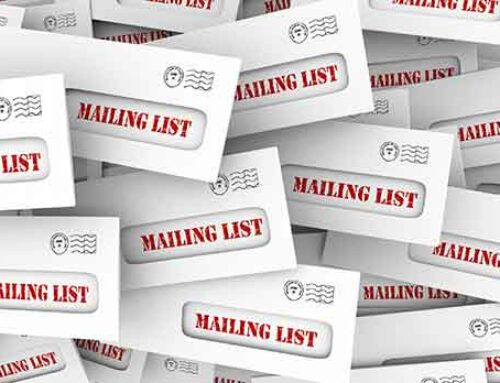 Your name is being sold. That’s a fact. Anytime you…
Your name is being sold. That’s a fact. Anytime you…
- Respond to an offer…
- Subscribe to a newsletter…
- Register for a warranty program…
- Sign up for a loyalty program…
- Sneeze… (ok,ok… but pretty close)
your data (name, birth date, colour preference, everything…) is being collected. And in a lot of cases that data is being sold. That’s the world we live in, and customer data is incredibly valuable. Today’s marketer is all about BIG data. Collecting as much information from as many sources as possible to refine personalized communications intended to get you to take action.
Of course, not every company sells your data. A lot do preserve customer data in respect of the customer initially sharing their data. Some preserve it simply because it is so valuable that they would rather not give your information to the competition. But many companies see additional value in ‘selling’ their customer information. Or trading it for new customer data from similar companies. When data is sold or traded, in an ideal world, your data is going to companies whose products or services are actually of benefit to you. But that’s not always the case.
So what can the average consumer do about this?
Be mindful – knowledge is power. Think twice before you release your information. Haphazardly signing up for emails, registering on websites, replying to Direct Mail, etc. is bound to fill your inbox, your voicemail, and mail box with further offers.
Ask about privacy policy – any reputable company collecting your information has to have a privacy policy. This will dictate how they will use your data, and whether it will be released to other companies. In general, companies must obtain your consent to collect your data (you must take some action to opt-in to their communications) and NOT require you to share your personal information simply to obtain product or service, they must collect only fair and relevant information, and must have their policies clear and accessible. If there are parts of their practices with your data you don’t like…
Opt-out – every company that does collect your information has to have opt-outs in place. The opt-out is the option for the consumer to elect out of receiving future marketing messages from the company. Generally this includes the option to opt out of allowing them to release your data AND/OR the option to opt out of communications from them as well. At the bottom of every marketing email you receive you should see an ‘unsubscribe’ option to allow you to opt-out of future emailings.
Know your rights – as a consumer there are multiple resources at your disposal that clearly define how companies can both collect and use your data. Government privacy laws are designed to protect individuals privacy and are made publicly accessible. Most countries also have nationwide marketing associations (like the ANA in the US and CMA in Canada) whose mission is to ensure it’s membership adheres to fair marketing practices. These associations typically also provide services that allow consumers to register their names to no longer receive calls/mail/emails from unsolicited companies (called national Do Not Call/Do Not Mail/Do not Contact registries). In theory when companies are running ‘acquisition’ campaigns – campaigns to customers whose data this company may have purchased and have no previous relationship with – in an effort to acquire new customers, they should be running their data against these registries to remove any individuals who have indicated they prefer NOT to receive unsolicited communications. It’s a great service for consumers to exercise their right to limit the number of unsolicited messages they receive.
Get Clever – this is a trick from the Direct Mail world if you’re interested in seeing the evolution of your data once you release it. Change a part of your name. For instance my name is Kristian Gibson. A unique spelling for sure that I can (and do) play with sometimes. For instance I might sign up as Christian Gibson with one company, then Kristian Gibson with another, and on and on. So what does this do? The company captures your data, and if you only use that spelling with that particular company then you will know right away if they’ve released your data. Takes a bit of patience and effort (it helps to maintain a spreadsheet), but if you’re really interested in seeing how data changes hands this is a good way to do it. It’s not always 100% guaranteed to work, but I have seen it work more often than not.
While a lot of consumers get frustrated at the volumes of messages they receive, I believe that with the continued evolution of the digital space, the growth of data mining and targeting, and improved printing technologies that customers will continue to see a shift in more customized, personalized, and relevant messages. This can only be a good thing.
And if not, heck, just hit unsubscribe. Actually, I’d prefer it. Believe it or not, despite the fact that Direct Marketing is our business, we at JR Direct encourage consumers to exercise their right to no longer receive unsolicited marketing communications. There is no point sending messages to individuals who prefer not to receive them. Everyone is better off that way!






